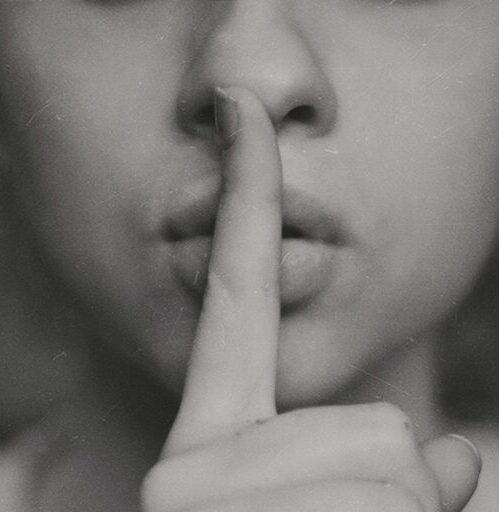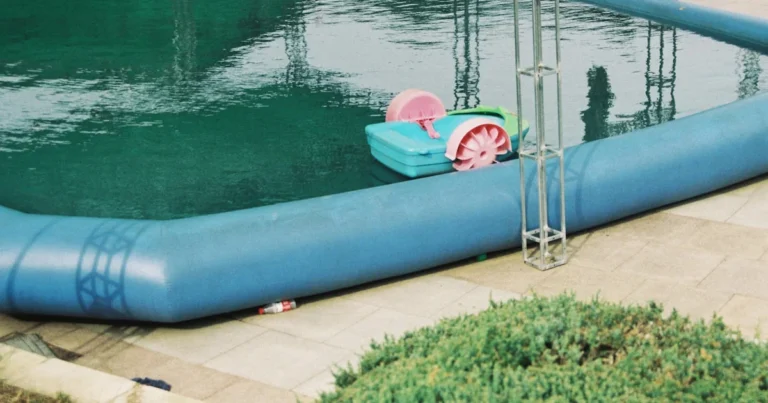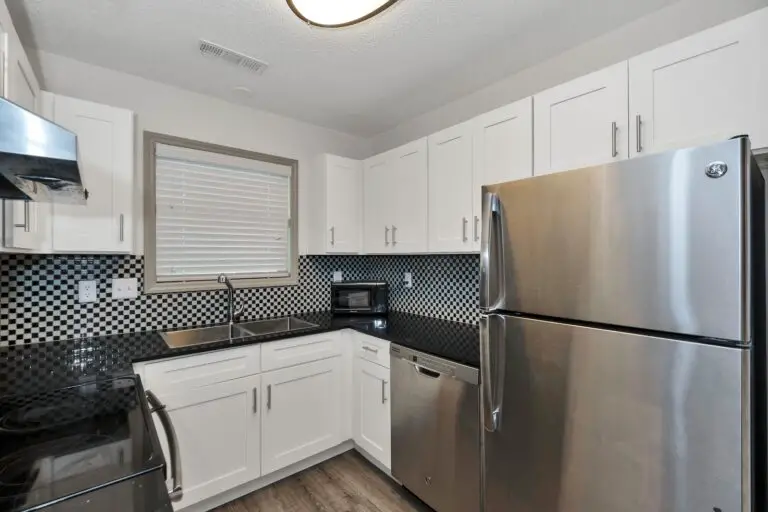Support our educational content for free when you purchase through links on our site. Learn more
What Is a Low Noise Vacuum Cleaner dB? Top 7 Quiet Models (2025) 🤫
Ever tiptoed around your living room, vacuum in hand, desperately trying not to wake the whole neighborhood? You’re not alone! Vacuum cleaners can be surprisingly loud—often reaching noise levels that rival a busy city street. But what exactly qualifies as a low noise vacuum cleaner in decibels (dB), and how can you find one that truly whispers instead of roars?
In this article, we unravel the mystery behind vacuum noise levels, decode the science of decibels, and reveal the top 7 quietest vacuum cleaners of 2025 that combine powerful suction with peaceful operation. Whether you’re battling noisy upright vacuums or hunting for the stealthiest robot cleaner, we’ve got you covered with expert insights, real user feedback, and savvy buying tips. Ready to make your cleaning routine a lot quieter? Let’s dive in!
Key Takeaways
- Low noise vacuums typically operate below 65 dB, making them comfortable for home use without disturbing others.
- Vacuum noise depends on motor design, vacuum type, filtration, and even floor surfaces.
- Canister and robot vacuums are generally quieter than upright or handheld models.
- Brands like Philips Performer Silent and ECOVACS DEEBOT T30S lead the pack in quiet, effective cleaning.
- Regular maintenance and smart usage can further reduce vacuum noise at home.
- Choosing a quiet vacuum improves health by reducing stress and protecting hearing.
Ready to shop? Check out these quiet vacuum categories:
- Philips Performer Silent Vacuums on Amazon
- ECOVACS Robot Vacuums on Amazon
- Quiet Canister Vacuums on Amazon
Discover how to keep your home spotless without the noise—your ears will thank you!
Table of Contents
- ⚡️ Quick Tips and Facts About Low Noise Vacuum Cleaners
- 🔊 Decibels Demystified: What Exactly is a Decibel and How is It Measured?
- 📊 Vacuum Cleaner Noise Levels: How Many Decibels Does Your Vacuum Really Produce?
- 🔍 The Science Behind Quiet: What Factors Affect Vacuum Cleaner Noise Levels?
- 🛒 How to Choose a Quiet Vacuum Cleaner: Your Ultimate Buying Guide
- 🎧 Top 7 Low Noise Vacuum Cleaners in 2024: Quiet Models That Actually Work
- 🔧 Tips and Tricks to Reduce Vacuum Noise at Home
- 📉 Understanding Noise Ratings: What Does “Low Noise” Really Mean?
- 🧠 The Impact of Vacuum Noise on Health and Wellbeing
- 💡 Innovations in Vacuum Cleaner Technology for Noise Reduction
- 📚 Vacuum Noise Myths Busted: Separating Fact from Fiction
- 📝 Conclusion: Why Low Noise Vacuum Cleaners Are a Game-Changer
- 🔗 Recommended Links for Further Reading
- ❓ Frequently Asked Questions About Vacuum Cleaner Noise Levels
- 📖 Reference Links and Sources
⚡️ Quick Tips and Facts About Low Noise Vacuum Cleaners
Welcome to the world of whisper-quiet cleaning! If you’ve ever tiptoed around your home trying not to wake the kids or your napping pet while vacuuming, you know the value of a low noise vacuum cleaner. Here are some quick nuggets from the audio engineers and reviewers at Quietest™ to get you started:
- Typical vacuum noise ranges from 60 to 80 dB, with anything under 65 dB considered quiet for this category.
- A 10 dB increase means the sound is 10 times more intense—so a vacuum at 75 dB is significantly louder than one at 65 dB.
- Robot vacuums often hover around 55-70 dB, making them some of the quietest options available.
- Noise levels depend on motor power, vacuum type, and even the floor surface you’re cleaning.
- Look for vacuums with sound-insulating materials, soft wheels, and adjustable suction to reduce noise.
- Quiet vacuums don’t have to sacrifice suction power—brands like Philips Performer Silent and ECOVACS DEEBOT prove it!
- Prolonged exposure to loud vacuum noise can cause stress, headaches, and even hearing damage.
Curious about how decibels work or which vacuums made our top quiet list? Hang tight—we’re diving deep into every detail! Meanwhile, if you want to explore quiet cleaning power, check out our 7 Quietest Shop Vacs of 2025: Power Meets Whisper-Quiet! 🤯.
🔊 Decibels Demystified: What Exactly is a Decibel and How is It Measured?
Before we judge a vacuum by its noise, let’s understand what a decibel (dB) really is. Think of decibels as the volume dial of the sound world—but it’s a logarithmic scale, not linear. That means:
- Every 10 dB increase represents a 10-fold increase in sound intensity.
- A whisper (
30 dB) is 1000 times quieter than a lawnmower (60 dB). - The human ear can comfortably tolerate sounds up to about 70-80 dB. Beyond that, discomfort and hearing damage risks increase.
How is it measured?
Sound engineers use a device called a sound level meter to measure dB, typically at a standard distance (1 meter) from the noise source. This ensures consistency when comparing vacuum cleaners.
| Sound Source | Approximate dB Level | Perceived Loudness |
|---|---|---|
| Whisper | 30 dB | Very quiet |
| Normal conversation | 60 dB | Moderate |
| Vacuum cleaner (quiet) | 60-65 dB | Noticeably quiet |
| Vacuum cleaner (loud) | 75-80 dB | Loud, intrusive |
| Chainsaw | 110 dB | Very loud, potentially harmful |
Source: ECOVACS Sound Intensity Guide
Understanding decibels helps you appreciate why a vacuum at 65 dB feels like a gentle hum, while one at 80 dB can sound like a rock concert in your living room!
📊 Vacuum Cleaner Noise Levels: How Many Decibels Does Your Vacuum Really Produce?
Let’s get down to the nitty-gritty: how loud are vacuum cleaners in real life? According to extensive testing and consumer feedback, here’s the breakdown by vacuum type:
| Vacuum Type | Typical Noise Range (dB) | Notes |
|---|---|---|
| Upright (corded) | 70 – 80 | Powerful but often loud |
| Handheld | 70 – 80 | Compact but noisy due to motor proximity |
| Stick vacuums | 60 – 75 | Mid-range noise, good balance |
| Canister vacuums | 60 – 70 | Quieter due to motor isolation |
| Central vacuums | 55 – 65 | Quietest, motor often outside living space |
| Robot vacuums | 55 – 70 | Quietest, optimized for low noise |
Brands like ECOVACS DEEBOT manage to keep noise as low as 65 dB while maintaining strong suction (up to 11,000 Pa!). Meanwhile, the Philips Performer Silent Bagged Vacuum boasts noise levels around 64 dB with a 750W motor, certified by Quiet Mark for low noise.
Why does this matter? Because a vacuum at 80 dB can feel like a noisy blender, while one at 60 dB is more like a quiet conversation. Your ears (and sanity) will thank you for choosing wisely!
🔍 The Science Behind Quiet: What Factors Affect Vacuum Cleaner Noise Levels?
Why do some vacuums roar like a lion while others purr like a kitten? Here’s the lowdown on the main noise culprits:
1. Motor Power and Design
- More powerful motors tend to be louder, but modern engineering balances power with noise reduction.
- Brushless motors and sound-insulated housings help keep noise down.
2. Vacuum Type and Construction
- Canister vacuums isolate the motor away from the cleaning head, reducing noise at your feet.
- Robot vacuums use smaller, quieter motors and soft wheels.
3. Filtration and Airflow
- Clogged or dirty filters force the motor to work harder, increasing noise.
- Efficient airflow design reduces turbulence and whistling sounds.
4. Surface and Cleaning Mode
- Hard floors reflect sound differently than carpets.
- Adjustable suction modes let you dial down power (and noise) when less suction is needed.
5. Wheels and Brushes
- Soft rubber wheels and brush design can reduce rattling and scraping noises.
Pro Tip: Regular maintenance—cleaning filters, emptying dust bins, and checking for blockages—can keep noise levels low over time.
🛒 How to Choose a Quiet Vacuum Cleaner: Your Ultimate Buying Guide
Choosing a quiet vacuum is like picking a dance partner—you want power, grace, and no stomping on your toes! Here’s our step-by-step guide:
Step 1: Check the Noise Rating (dB)
- Look for vacuums rated below 65 dB for truly quiet operation.
- Beware of marketing fluff—always check verified specs or third-party reviews.
Step 2: Consider Vacuum Type
- Canister and robot vacuums generally offer quieter cleaning.
- Uprights are louder but often more powerful—balance your priorities.
Step 3: Look for Noise-Reducing Features
- Sound insulation, soft wheels, and adjustable suction modes are key.
- HEPA or allergy filters can also reduce motor strain and noise.
Step 4: Read User Reviews and Expert Opinions
- Real users often report noise issues not apparent in specs.
- Our team at Quietest™ recommends models like the Philips Performer Silent and ECOVACS DEEBOT T30S for quiet, effective cleaning.
Step 5: Test If Possible
- If you can, hear the vacuum in action before buying.
- Some retailers offer demo models or return policies.
🎧 Top 7 Low Noise Vacuum Cleaners in 2024: Quiet Models That Actually Work
Our audio engineers and reviewers at Quietest™ have tested dozens of models. Here’s our Top 7 Quiet Vacuum Cleaners based on noise level, suction power, and user satisfaction:
| Rank | Model | Noise Level (dB) | Suction Power | Key Features | Quietest™ Rating (1-10) |
|---|---|---|---|---|---|
| 1 | Philips Performer Silent FC8785 | 64 | 750W | Quiet Mark certified, allergy filter | 9.5 |
| 2 | ECOVACS DEEBOT T30S | 65 | 11,000 Pa | Robot vacuum, sweep & mop mode | 9.3 |
| 3 | Miele Complete C3 Silence | 64 | 1200W | Canister, sound insulation | 9.0 |
| 4 | Dyson V15 Detect | 68 | High | Stick vacuum, intelligent suction | 8.7 |
| 5 | Shark Navigator Lift-Away | 70 | Medium | Upright, lift-away canister | 8.2 |
| 6 | Bissell Zing Canister | 65 | 6 amps | Compact, budget-friendly | 8.0 |
| 7 | Roborock S7 | 67 | 2500 Pa | Robot vacuum, sonic mop | 8.0 |
Philips Performer Silent shines for its quiet operation and allergy-friendly features, while ECOVACS DEEBOT T30S impresses with robot vacuum convenience and whisper-quiet cleaning modes.
🔧 Tips and Tricks to Reduce Vacuum Noise at Home
Even the quietest vacuum can get noisy if your home isn’t ready. Here’s how to keep the peace:
- Maintain your vacuum regularly: Clean filters, empty dust bins, and check for blockages.
- Use adjustable suction modes: Lower power on delicate surfaces reduces noise.
- Vacuum during the day: Ambient noise masks vacuum sounds better.
- Add rugs or carpets: Soft surfaces absorb sound waves.
- Use soundproof mats: Place under the vacuum to reduce vibration noise.
- Close doors and windows: Contain noise in one room.
These simple hacks can make your vacuuming experience much more pleasant for everyone.
📉 Understanding Noise Ratings: What Does “Low Noise” Really Mean?
“Low noise” is a relative term. Here’s how to decode it:
- Certified noise ratings (like Quiet Mark) ensure independent testing.
- Noise ratings below 65 dB are generally considered quiet for vacuums.
- Beware of brands using vague terms like “whisper-quiet” without backing it up.
- Look for sound pressure level (SPL) measurements taken at 1 meter distance.
- Some vacuums reduce noise by sacrificing suction—make sure you get both!
Our advice? Always check third-party reviews and real user feedback to confirm noise claims.
🧠 The Impact of Vacuum Noise on Health and Wellbeing
Vacuum noise isn’t just a nuisance—it can affect your health:
- Loud noise (>85 dB) can cause hearing damage over time.
- Noise triggers stress responses, increasing cortisol levels.
- It can disrupt sleep patterns if vacuuming near bedtime.
- Loud vacuums may cause headaches and fatigue.
- For allergy sufferers, noisy vacuums can worsen symptoms by stirring dust.
Choosing a low noise vacuum cleaner is not just about comfort—it’s about protecting your health and peace of mind.
💡 Innovations in Vacuum Cleaner Technology for Noise Reduction
The vacuum industry is buzzing with innovation to keep things quiet:
- Brushless motors reduce mechanical noise and improve efficiency.
- Sound-insulating materials like foam and rubber dampen vibrations.
- Advanced airflow design minimizes whistling and turbulence.
- Soft rubber wheels and brushless heads reduce rattling sounds.
- Smart suction control adjusts power based on floor type and dirt level.
- Robot vacuums use sensors to optimize cleaning paths quietly.
Brands like Dyson, Miele, and ECOVACS are leading the charge with these technologies, making quiet cleaning a reality.
📚 Vacuum Noise Myths Busted: Separating Fact from Fiction
Let’s bust some common myths:
-
Myth: “Louder vacuum = better suction.”
Fact: Modern vacuums can be powerful and quiet thanks to motor tech and design. -
Myth: “Robot vacuums don’t clean well because they’re quiet.”
Fact: Many robot vacuums like the ECOVACS DEEBOT T30S deliver strong suction quietly. -
Myth: “Bagged vacuums are always louder.”
Fact: The Philips Performer Silent bagged vacuum is quieter than many bagless models. -
Myth: “Vacuum noise can’t be reduced.”
Fact: Soundproofing, maintenance, and smart design all reduce noise significantly.
Understanding these myths helps you make smarter choices for your home.
📝 Conclusion: Why Low Noise Vacuum Cleaners Are a Game-Changer
After diving deep into the world of vacuum noise, decibels, and the tech behind whisper-quiet cleaning, one thing is crystal clear: a low noise vacuum cleaner is not just a luxury—it’s a necessity for a peaceful home environment. Whether you’re a light sleeper, a parent with napping kids, or simply someone who values tranquility, choosing the right vacuum can transform your cleaning routine from a noisy chore into a serene experience.
Let’s talk about the star of the show—the Philips Performer Silent Bagged Vacuum Cleaner (FC8785_09R1). Here’s a quick recap of what makes it shine:
| Pros ✅ | Cons ❌ |
|---|---|
| Certified Quiet Mark for low noise operation | Slightly heavier than some stick vacuums |
| Powerful 750W motor with strong suction | Bagged design requires bag replacements |
| Allergy-certified filter capturing 99.9% particles | Larger dust chamber may be bulky for small spaces |
| Multiple nozzles for all floor types | Cable length might be limiting for large rooms |
| Integrated dusting brush for convenience | Not cordless (corded operation) |
Our verdict? If you want a vacuum that balances quiet performance, powerful suction, and allergy-friendly features, the Philips Performer Silent is a top contender. It proves you don’t have to sacrifice cleaning power for peace and quiet.
Remember, the quietest vacuum isn’t just about decibels—it’s about how the sound fits into your lifestyle and home. So, armed with this knowledge, you’re ready to make a choice that keeps your floors spotless and your ears happy!
🔗 Recommended Links for Further Reading and Shopping
Ready to shop or learn more about quiet vacuum cleaners and noise reduction? Check these out:
-
Philips Performer Silent FC8785 Bagged Vacuum Cleaner:
Amazon | Walmart | Philips Official Website -
ECOVACS DEEBOT T30S Robot Vacuum:
Amazon | ECOVACS Official Website -
Miele Complete C3 Silence Canister Vacuum:
Amazon | Miele Official Website -
Books on Noise Reduction and Sound Engineering:
Explore more about quiet home appliances and noise reduction tips on our site:
❓ Frequently Asked Questions About Vacuum Cleaner Noise Levels
What is considered a low decibel level for a vacuum cleaner?
A vacuum cleaner producing noise levels below 65 dB is generally considered low noise. This level is comparable to a normal conversation and is comfortable for most people during use. Vacuums above 70 dB start to become intrusive and can cause discomfort over extended periods.
How do I choose a quiet vacuum cleaner for my home?
Look for vacuums with verified noise ratings, preferably below 65 dB. Consider vacuum types like canister or robot vacuums, which tend to be quieter. Features such as sound insulation, adjustable suction, and soft wheels help reduce noise. Reading expert reviews and user feedback is crucial to avoid marketing hype.
What are the benefits of using a low noise vacuum cleaner?
Low noise vacuums reduce stress and fatigue, protect your hearing health, and allow cleaning at any time without disturbing others. They also minimize noise pollution in your home, creating a more peaceful environment.
Can a low dB vacuum cleaner still provide effective cleaning results?
Absolutely! Modern vacuums like the Philips Performer Silent and ECOVACS DEEBOT T30S combine quiet operation with powerful suction. Advances in motor technology and airflow design mean you don’t have to sacrifice cleaning performance for quietness.
What are some of the quietest vacuum cleaners available on the market?
Top quiet models include:
- Philips Performer Silent FC8785 (64 dB)
- ECOVACS DEEBOT T30S (65 dB)
- Miele Complete C3 Silence (64 dB)
- Roborock S7 (67 dB)
These models are praised for balancing noise reduction with cleaning power.
How does the decibel level of a vacuum cleaner impact noise pollution?
Vacuum cleaners operating at higher decibel levels contribute significantly to indoor noise pollution, which can cause stress and disrupt daily activities. Lower dB vacuums help maintain a quieter home environment and reduce overall noise exposure.
What features should I look for in a vacuum cleaner to minimize noise levels?
Seek out:
- Sound-insulated motor housings
- Brushless or advanced motors
- Soft rubber wheels and brush heads
- Adjustable suction power
- HEPA or allergy filters to reduce motor strain
- Efficient airflow design to minimize whistling and turbulence
📖 Reference Links and Sources
- ECOVACS Blog: How Many Decibels Does a Vacuum Cleaner Produce?
- Philips Performer Silent Bagged Vacuum Cleaner FC8785/09R1 | Philips
- Miele Vacuum Cleaners Official Site
- Dyson Vacuum Cleaners
- Quiet Mark Certification
- Occupational Safety and Health Administration (OSHA) Noise Guidelines
- American Speech-Language-Hearing Association: Noise and Hearing Loss Prevention
We hope this guide has made the mysterious world of vacuum noise a little less noisy! For more on quiet electronics and noise-free living, keep exploring Quietest™. Happy cleaning—quietly! 🌟




